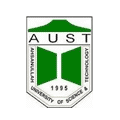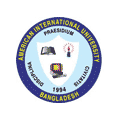Universities in Bangladesh

Ahsanullah University of Science & Technology
Dhaka, Bangladesh
Ahsanullah University of Science and Technology is a private technical university founded in 1995. It is based in Dhaka, Bangladesh and was established by the Dhaka Ahsania Mission, a non-profit voluntary organization in Bangladesh. The university consists of the following faculties and departments: Faculty of Architecture and Planning, Faculty of Engineering, Faculty of Business and Social Science, Faculty of Education, and an Institute of Technical and Vocational Education and Training. Ahsanullah University has established close collaboration with the International Association of... See full description.

American International University-Bangladesh (AIUB)
Banani, Bangladesh
The American International University-Bangladesh is a private research university based at Banani in Dhaka, Bangladesh. It was founded in 1994 and currently runs six campuses, housing the following faculties: Faculty of Business Administration, Faculty of Engineering, Accounts and Audit Section, Faculty of Science and Information Technology, Faculty of Business Administration, as well as the Department of Math, Department of Basic Sciences and Department of Architecture. The school distinguishes itself with the various extracuriccular activities made available. Students can take... See full description.
Universities in Bangladesh by City:
BananiDhakaDhanmondiAbout universities in Bangladesh
Bangladesh is one of the poorest countries in the world and, with it population of over 140 million, has an extremely dense concentration of people living below the poverty line; all of this leads to problems with the country’s system of higher education, which in turn perpetuates Bangladesh’s rampant poverty. Only 4% of college-age students in Bangladesh are actually enrolled in a college or university program, and the system is largely inaccessible for students who do not come from privileged backgrounds. There is major growth in this area, and the vast profusion of new institutions of higher learning in Bangladesh promises to provide an infrastructure for future improvements. If proper quality controls can be put in place and barriers to achievement removed, then the system of higher education can become an engine of growth and development.
In 1971, when Bangladesh gained independence from Pakistan, there were 4 universities in the country, all public and fully government-funded. Today, there are almost 80 universities (29 public and 50 private), along with more than a thousand independent institutions offering various forms of post-secondary education and certificates. All of this means that many more Bangladeshi students can be served – the trouble is that demand is still low and quality in many cases is even lower. Lagging demand for higher education in Bangladesh is chiefly the result of poor education at the secondary level. High school graduates in Bangladesh rarely have proper preparation for college. In fact only 12% of those with college diplomas are even eligible to apply, let alone prepared to succeed. This problem is well-recognized among the country’s educational authorities, and efforts are being made to improve things at the secondary level, but the problem will take time and determination to resolve.
The other serious problem that plagues higher education in Bangladesh is a complete absence of oversight and regulations. The lack of regulatory standards means that each institution sets its own standards, which often compromises the quality of instruction. While in many cases the universities and colleges in Bangladesh hold themselves rigorously accountable and strive to provide the best education that they can, there are inevitably other institutions that cut corners or cheat their students. This leads to a general perception that going to college in Bangladesh is of questionable value, and further reduces demand. The accrediting body, the University Grants Commission or UGC, is charged with setting and enforcing standards, but its powers are limited. Scarcity of government funds makes it difficult for the UGC to observe all of the schools it accredits, and even more difficult to stop violations when they occur. It is estimated that more than 60% of accredited private universities in Bangladesh are not up to code.
These challenges are imposing, but not insurmountable. The government of Bangladesh is apprised of the issues and has, within its limited means, made efforts to resolve them where possible. International aid has also made a dent in the problems facing the country. Time and patience, however, will be required if Bangladesh is to join the community of nations with functioning systems of higher education.
In 1971, when Bangladesh gained independence from Pakistan, there were 4 universities in the country, all public and fully government-funded. Today, there are almost 80 universities (29 public and 50 private), along with more than a thousand independent institutions offering various forms of post-secondary education and certificates. All of this means that many more Bangladeshi students can be served – the trouble is that demand is still low and quality in many cases is even lower. Lagging demand for higher education in Bangladesh is chiefly the result of poor education at the secondary level. High school graduates in Bangladesh rarely have proper preparation for college. In fact only 12% of those with college diplomas are even eligible to apply, let alone prepared to succeed. This problem is well-recognized among the country’s educational authorities, and efforts are being made to improve things at the secondary level, but the problem will take time and determination to resolve.
The other serious problem that plagues higher education in Bangladesh is a complete absence of oversight and regulations. The lack of regulatory standards means that each institution sets its own standards, which often compromises the quality of instruction. While in many cases the universities and colleges in Bangladesh hold themselves rigorously accountable and strive to provide the best education that they can, there are inevitably other institutions that cut corners or cheat their students. This leads to a general perception that going to college in Bangladesh is of questionable value, and further reduces demand. The accrediting body, the University Grants Commission or UGC, is charged with setting and enforcing standards, but its powers are limited. Scarcity of government funds makes it difficult for the UGC to observe all of the schools it accredits, and even more difficult to stop violations when they occur. It is estimated that more than 60% of accredited private universities in Bangladesh are not up to code.
These challenges are imposing, but not insurmountable. The government of Bangladesh is apprised of the issues and has, within its limited means, made efforts to resolve them where possible. International aid has also made a dent in the problems facing the country. Time and patience, however, will be required if Bangladesh is to join the community of nations with functioning systems of higher education.

